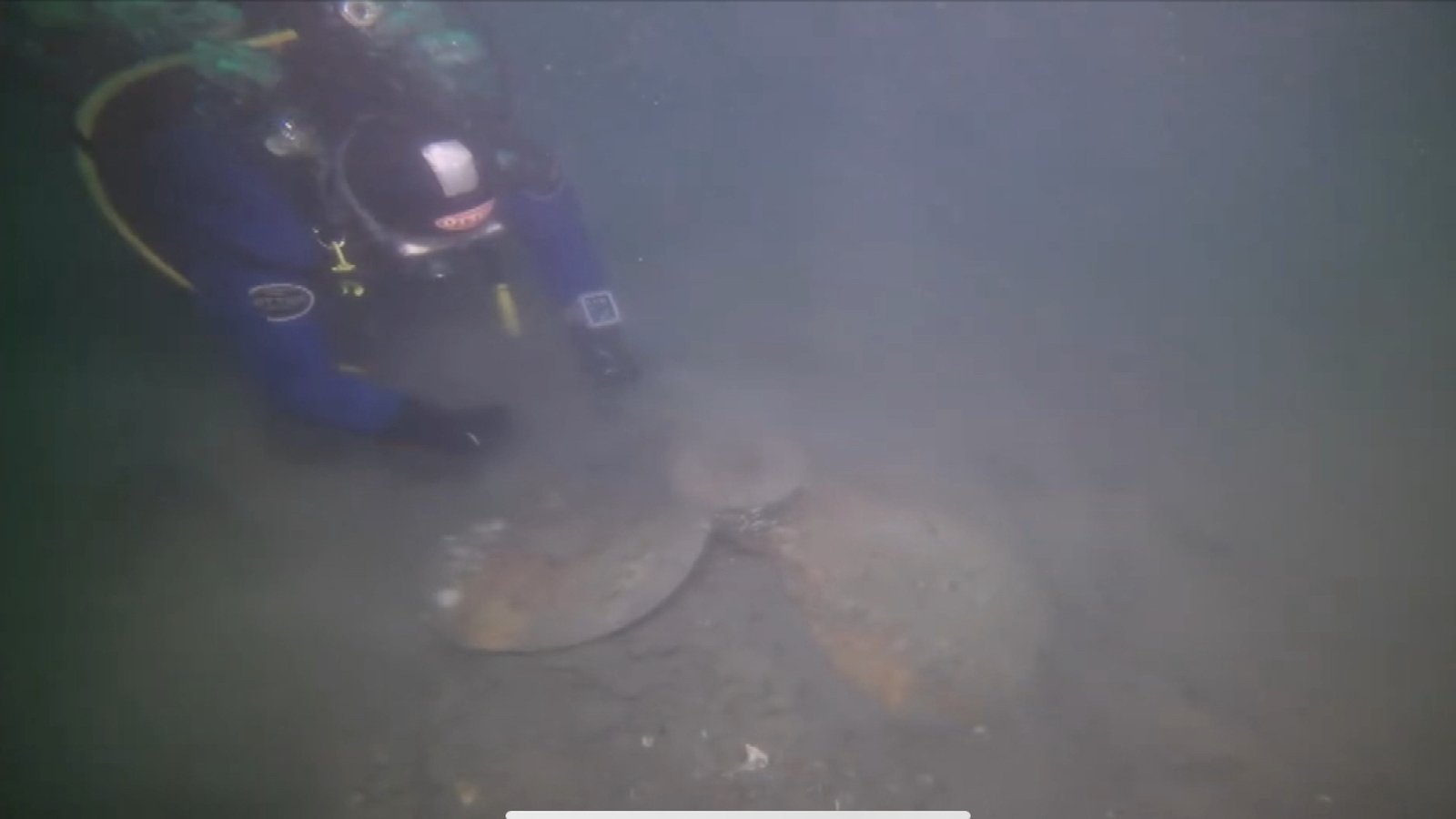World
Propeller from WWI German submarine recovered off Cork

Divers have recovered a propeller believed to be from a World War One German submarine which sank in Cork Harbour in 1917.
The UC-42 sank in 30 metres of water just off Roches Point at the mouth of Cork Harbour on 10 September 1917 when a mine it was carrying exploded. All 27 crew died.
The entrance to Cork Harbour was regularly mined by German forces during WWI in a bid to disrupt British supply routes.
The location of the submarine was re-discovered in 2010 by local divers. Protected under the National Monuments Act, the submarine is considered a war grave.
The propeller was discovered 15 metres from the submarine by diver Timmy Carey of Blackwater Sub Aqua Club two years ago.
Concerned it was vulnerable to salvage or trawling, he initiated a plan to safeguard it and said today’s recovery highlighted that working with the relevant authorities “we can successfully recover vulnerable materials from wreck sites like the UC-42 submarine”.
The recovery was part of a joint operation between the Blackwater Sub Aqua Club and Mizen Archaeology, with the support of the National Monuments Service, the National Museum of Ireland and the Federal Republic of Germany through their embassy.
Over several months a dive team of six assessed, recorded and excavated the propeller ahead of the recovery operation.
At lunchtime today it was finally raised from a depth of 30 metres and brought into Kinsale Harbour onboard the MV Harpy.
Conservation work will begin immediately “to confirm, or otherwise”, that the propeller is associated with the UC-42 ahead of it going on display on Spike Island.
Underwater archaeologist, Julianna O’Donoghue of Mizen Archaeology, said she expects the conservation process will reveal markings on the propeller which “will further our understanding of the site, and confirm, or otherwise, if it is associated with the UC-42 wreck”.
In November 1917, an oil slick first alerted the British Navy in Cobh, then Queenstown, who sent divers to investigate.
After dropping depth charges in the area, the divers found the submarine – its forward mine shoot empty, and the stern completely destroyed, indicating that one of the mines detonated prematurely.
The divers also found the hatches were open, suggesting the crew had attempted to escape. The periscope and documents, including the control room logbook, were recovered as evidence.
Its location remained unknown for almost 93 years, until it was discovered by a local dive club in 2010. Since then, it has become a popular dive site.
Minister for Heritage Malcolm Noonan welcomed the support of the National Monuments Service for the project.
“The UC-42 wreck is a significant part of our underwater cultural heritage and the final resting place of the German crew who were on board. It remains incumbent on us all to ensure we respect their remains,” he said.
The Ambassador of Germany to Ireland, Cord Meier-Lkodt, said they were looking forward to the conservation work “which will hopefully allow for the propeller to be exhibited in a local museum. This will encourage more engagement with and learning about both German and Irish wartime history”.
The submarine is understood to have been built by the A.G. Vulcan shipyard in Hamburg and went into service on 18 November 1916.
Forty-five metres in length, five metres wide and 3.7 metres high, the vessel had a deck gun, seven torpedoes, and six mine chutes carrying a total of 18 mines.
At the time of the explosion, the submarine was manned by a crew of 26 commanded by Oberleutnant H.A. Muller.










